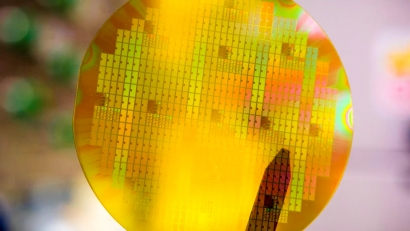
Using GE’s silicon carbide (SiC) technology will provide a significant increase in power density that will enable GE technologists to develop an inverter that is small enough and delivers the required power to support electric flight. GE’s vertically integrated experience — from chip to system level architecture — provides a significant advantage for optimizing design and packaging density for complex applications.
Konrad Weeber, Chief Engineer of Electric Power at GE Research said, “We have successfully built and demonstrated inverters at ground level that meet the power, size and efficiency requirements of electric flight. The next step is to build and demonstrate one that is altitude ready.”
Weeber noted that managing electric power at the required high voltages increases the challenges of developing insulation systems that perform reliably at high altitudes.
“With recent advances in materials and power electronics, we are beginning to overcome the challenges faced in developing energy-reducing electrification concepts, and this inverter work is a critical step in NASA’s Electrified Aircraft Propulsion effort,” said Amy Jankovsky, subproject manager, Hybrid Gas-Electric Propulsion at NASA’s Glenn Research Center. “Our partnership with GE is key to advancing flight-weight and flight-ready components in the megawatt class."
Funding on the program will be a 50/50 cost share between GE and NASA. NASA has been researching electric aircraft architectures since the early 2000s and has actively developed experimental aircraft that demonstrate electrical propulsion concepts to significantly reduce fuel consumption and emissions. This new program builds on the technology milestones of MW-class and kV-class highly compact inverters previously developed in partnership with the US Department of Energy and NASA’s AAVP and validation-tested at GE Research in Niskayuna, New York, and the GE Aviation Electrical Power Integrated Systems Center (EPISCenter) at Dayton, Ohio.

